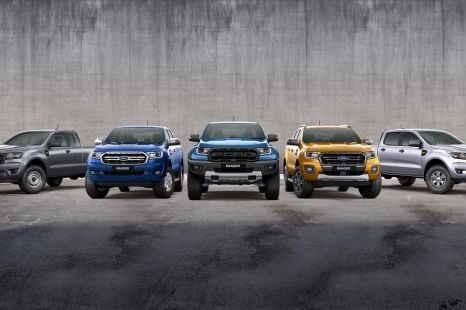

William Stopford
2021 Ford Ranger price and specs
4 Years Ago
The 2020 Ford Ranger is a Pick-up or Cab Chassis 4x2 offered in cab-chassis (double-cab) or pick-up (double-cab) body styles. Used prices in Australia typically range from $28,340 for the XL variant and topping out at $77,190 for the Raptor.
There are 8 variants of the Ranger available in Australia and this generation went on sale in February of 2020.
Engine options include 2.2L turbo diesel common rail (118kW/385Nm), 3.2L turbo diesel common rail (147kW/470Nm) and 2.0L turbo diesel common rail (157kW/500Nm). Available with 6-speed manual, 6-speed automatic or 10-speed automatic transmissions. Both rear-wheel drive and four-wheel drive configurations are available.
The 2020 Ranger was offered with a 5 year, unlimited km warranty.
Quickly see how this car stacks up against its competition. Select any benchmark to see more details.
Where expert car reviews meet expert car buying – CarExpert gives you trusted advice, personalised service and real savings on your next new car.
| Configuration | Price From* |
|---|---|
| 3.2L, 6-speed auto, Double Cab Utility, Diesel, 4x4 | $66,290 |
| 2.0L, 10-speed auto, Double Cab Utility, Diesel, 4x4 | $67,790 |
| 3.2L, 6-speed auto, Double Cab Utility, Diesel, 4x4 | $65,290 |
| 2.0L, 10-speed auto, Double Cab Utility, Diesel, 4x4 | $66,790 |
| Configuration | Price From* |
|---|---|
| 2.0L, 10-speed auto, Double Cab Utility, Diesel, 4x4 | $76,490 |
| 2.0L, 10-speed auto, Double Cab Utility, Diesel, 4x4 | $75,990 |
| 2.0L, 10-speed auto, Double Cab Utility, Diesel, 4x4 | $77,190 |
| 2.0L, 10-speed auto, Double Cab Utility, Diesel, 4x4 | $76,290 |
Where expert car reviews meet expert car buying – CarExpert gives you trusted advice, personalised service and real savings on your next new car.
See our comprehensive details for the Ford Ranger
The Ford Ranger offers ample boot space with its practical cargo bed, designed to accommodate a variety of loads. The size of the bed provides sufficient room for tools, equipment, and gear, making it versatile for both everyday tasks and larger hauling needs. With its durable design, the Ranger’s cargo area is built to handle demanding conditions and heavy use.
Where expert car reviews meet expert car buying – CarExpert gives you trusted advice, personalised service and real savings on your next new car.
CarExpert High Resolution Photos of the Ford Ranger

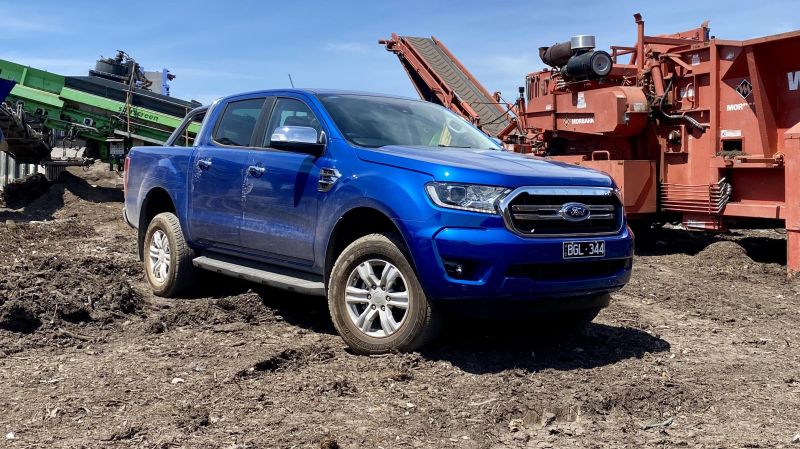
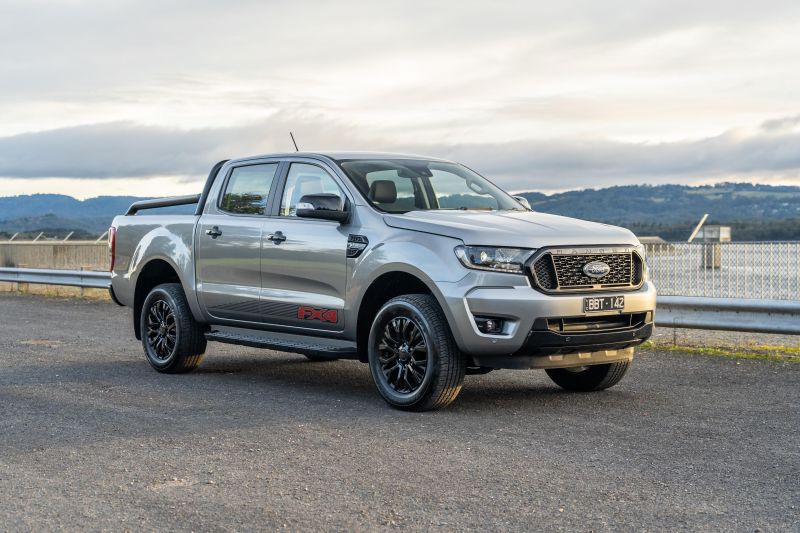
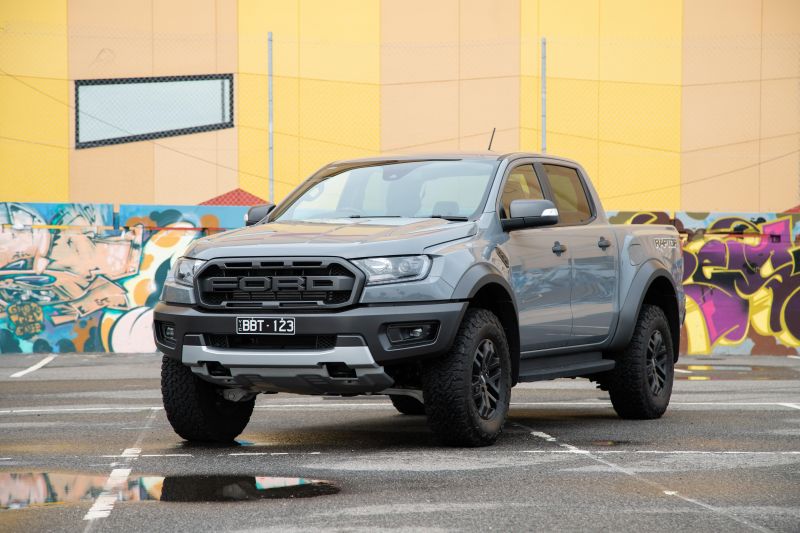
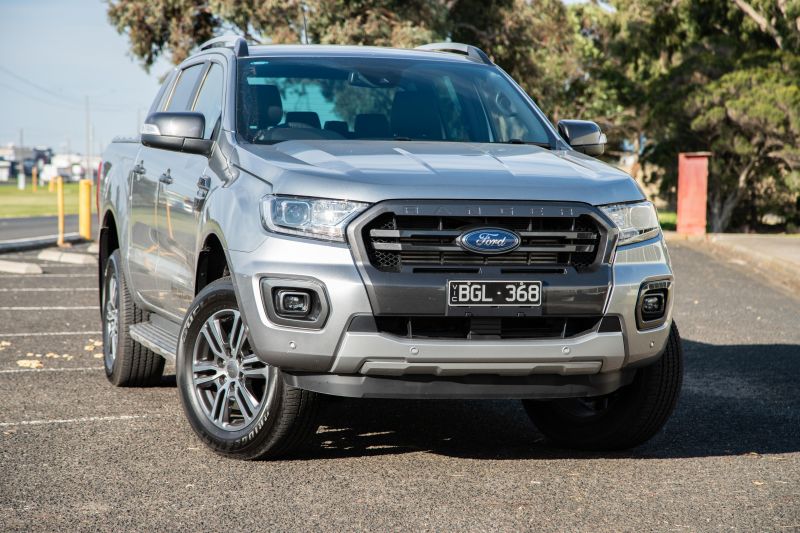
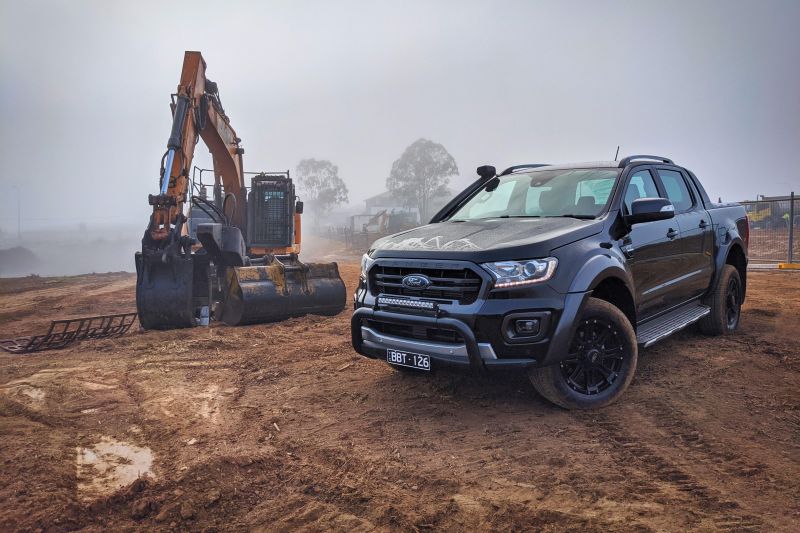
View 6 images
The Ranger boasts a rugged and bold exterior with a distinctive grille, muscular body lines, and robust stance. Its design combines style with practicality, ensuring it looks sharp while being durable enough for off-road adventures and tough tasks.
The Ford Ranger’s interior is designed for comfort and functionality, featuring supportive seats, a user-friendly layout, and durable materials. It offers ample space for passengers and practical storage solutions, making it suitable for both work and leisure
The Ranger’s infotainment system includes a touchscreen display with intuitive controls, smartphone integration via Apple CarPlay and Android Auto, and available navigation. It provides seamless connectivity and entertainment options, enhancing the driving experience.
There are 11 different fuel economy figures for the Ford Ranger
The most fuel efficient Ford Ranger is the XL with a 6-speed Manual which is powered by a 2.2L TURBO DIESEL COMMON RAIL and uses 6.5L of diesel per 100km on the combined cycle.
The Ford Ranger that uses the most amount of fuel is the Wildtrak X with a 6-speed Automatic which is powered by a 3.2L TURBO DIESEL COMMON RAIL and uses 8.9L of diesel per 100km on the combined rural and urban test cycle.
Below is a table of all the Ford Ranger variants and their fuel economy figures. Click below the table to see an expansion and additional details, including specific usage for city and highway driving.
What are the running and servicing costs of a Ford Ranger?
The Ford Ranger has a recommended service interval of 12 months or 15,000 km, whichever comes first.
Our expert take on Ford Ranger drivability.
It’s quicker than most of its rivals in a straight line, although the Wildtrak V6 can’t match V8 trucks from the USA, and the torquey turbo-diesel engine combines with a smart suspension tune to make it comfortable with a 2500kg caravan hooked up. Likewise, it performed well against our high-tech trailer dyne.
Off-road, it wasn’t fazed by any of our tests. Along with solid hardware, all the onboard technology makes actually unlocking the car’s capability simple for nervous off-roaders.
Also on hand to make life easier for nervous off-roaders are the excellent front-view camera and a range of preset off-road modes. Not sure how to set up your four-wheel drive system? Choose your terrain using the dial, and let the car work it out for you.
It sets a new benchmark for dual-cab utes, and its rivals have some serious catching up to do.
The Ranger’s Aussie DNA remains evident once you break out of the city limits and find yourself loping along ungraded gravel and coarse tarmac.
It rides over corrugations with a minimum of fuss, offering plenty of softness in the suspension, matched with good amounts of control on rebound — even when there’s nothing heavy in the tub.
It’s also quiet in terms of the degree to which tyre roar, wind noise, and engine gruffness are filtered out of the cabin at cruise.
While the core ladder frame and coil front/leaf rear suspension setups are familiar, Ford Australia’s engineers added 50mm in track width and moved the dampers outboard, theoretically tamping down ever further on hopping and bouncing when lightly laden.
It’s also worth noting that Rangers graded XLT, Sport and Wildtrak now have rear disc brakes rather than drums.
The Bi-Turbo four is largely familiar but Ford has made some changes to iron out some bugs that affected the first iteration – there were indeed some issues.
Its sequential, differently-sized turbos cut lag, and the gear spacings perhaps felt better in this incarnation, meaning it seemed less fussy or prone to hunt about for the perfect ratio. It does still have a slim peak torque band, but overall it’s a refined and sufficiently punchy setup.
Yes, most people will lust after the $3000 more expensive V6, but the Bi-Turbo four offers the sort of punch its displacement belies, and there’ll almost certainly be much shorter wait lists.
The headline V6 offers better punch – 30kW and 100Nm to be precise – as you would expect, as well as idle stop/start and the aforementioned permanent 4WD. It’s also quite refined from outside, with a fairly muted diesel idle.
Overall it offers more immediate punch off the mark as well as better traction in the right setup, and a superior surge of torque from 1750rpm for easier overtaking. It isn’t hard to see the appeal, and it certainly puts a D-Max or HiLux in the shade for refinement and performance.
The difference in fuel use between the four-cylinder (7.6L/100km) and V6 (8.4L/100km) is actually quite small.
The base four-wheel drive system available with the 2.0-litre single- and twin-turbo four-cylinder diesel engines is a part-time system with a two-speed electronic shift-on-the-fly transfer case featuring 2H, 4H and 4L modes.
It’s what we have come to expect from most dual-cab utes, forcing owners to manually shift from two- to four-wheel drive when the going gets rough. It shouldn’t be driven in four-wheel drive on sealed roads.
The 2024 Ford Ranger with the 3.0-litre V6 turbo-diesel or 3.0-litre V6 twin-turbo petrol engines, however, feature an on-demand four-wheel drive system that offers the same 2H, 4H and 4L modes, but also has a 4A automatic mode that can be used on “high-traction surfaces” like paved roads.
This 4A mode when selected can continuously distribute power between the front and rear axles for “optimum performance in all on-road conditions”. Essentially, it behaves like an all-wheel drive car in 4A.
There’s also an electronic rear differential lock that can be activated through the Sync4 infotainment touchscreen.
Depending on the Ranger variant, there are a variety of drive modes that change the vehicle’s throttle response, gearshifts, traction control and ABS. These include the following:
Available on some models is an Off-Road Screen (ORS) that’s able to display the following information:
A surround-view camera, which is available on some models, can also be interacted with in this ORS.
If you're interested in getting behind the wheel of the Ranger for yourself, you can find your local Ford dealership via the Ford Ford website.
What is the warranty on a Ford Ranger?
The Ford Ranger offers a 5 year unlimited km warranty. This is separate to the warranty on offer under Australian Consumer Law which can be greater for certain parts based on what is deemed as a reasonable period of time.
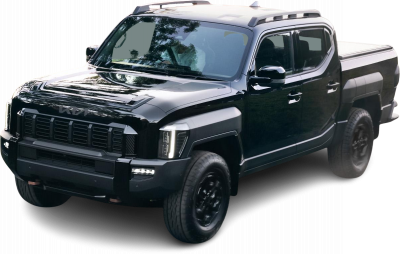
Tasman
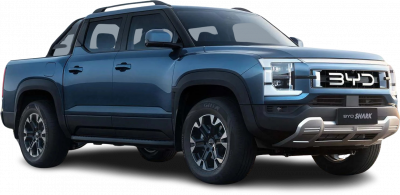
Shark 6
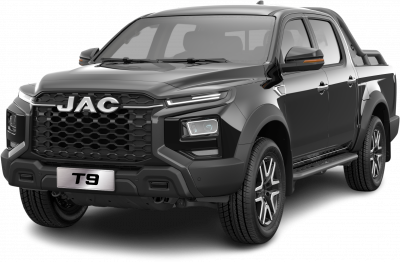
T9
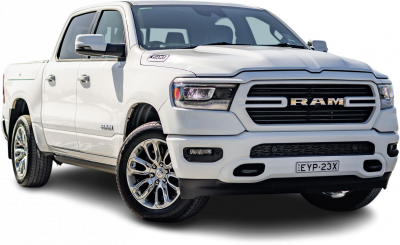
1500
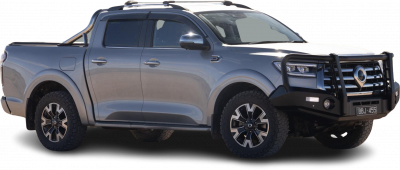
Cannon
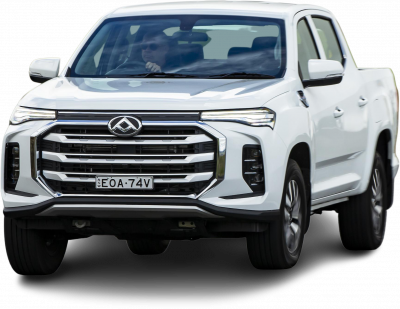
T60
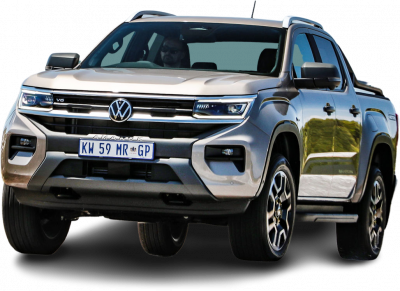
Amarok
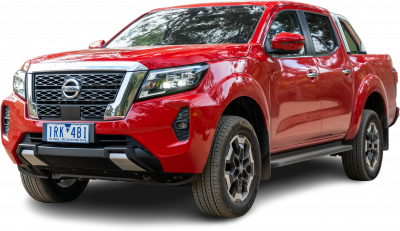
Navara
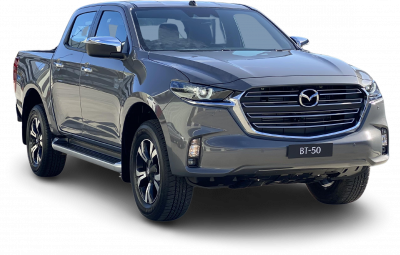
BT-50
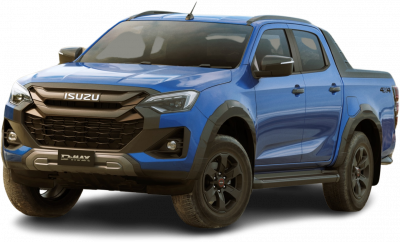
D-Max
Can’t see the car you’re considering?
Is this the right car for you? Out experts buy or not guide.
The Ford Ranger is a strong contender if you’re looking for a midsize pickup that combines rugged capability with modern features. It’s well-suited for both work and play, offering durable construction, ample cargo space, and a versatile design. The interior provides comfort and practicality, while the infotainment system keeps you connected and entertained. If you need a truck with off-road capability, towing power, and everyday usability, the Ranger is a solid choice. However, if you prioritize maximum payload or towing capacity, you might want to consider a full-size truck.
Where expert car reviews meet expert car buying – CarExpert gives you trusted advice, personalised service and real savings on your next new car.
The cheapest Ford Ranger is the XL that starts from $28,340.
The most expensive Ford Ranger is the Raptor that starts from $77,190.
The best towing capacity of a Ford Ranger is 3500 kg offered by the following variants: XL, XLS, XLT, Sport, FX4, Wildtrak and Wildtrak X.
The largest Ford Ranger is the Raptor which measures 2028mm wide, 5398mm in length and sits 1873mm tall.
The most powerful Ford Ranger is the Raptor which has 157kW of power from its 2.0L TURBO DIESEL COMMON RAIL engine.
The Ford Ranger is built in Thailand and shipped to Australia.
The heaviest Ford Ranger is the Wildtrak which weighs 3200 kg (kerb weight).
The Ford Ranger uses diesel.